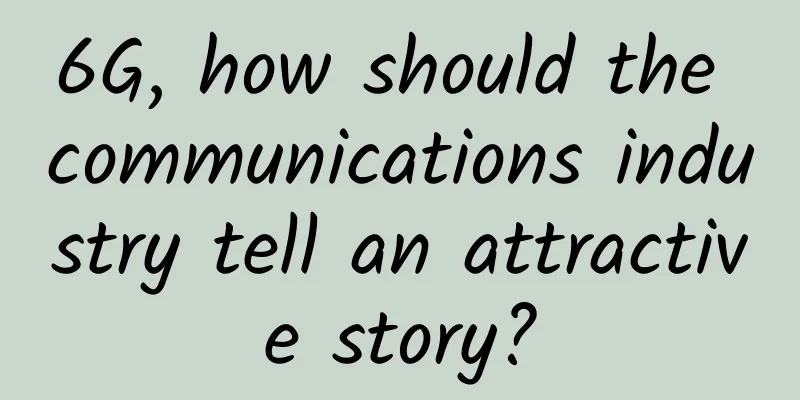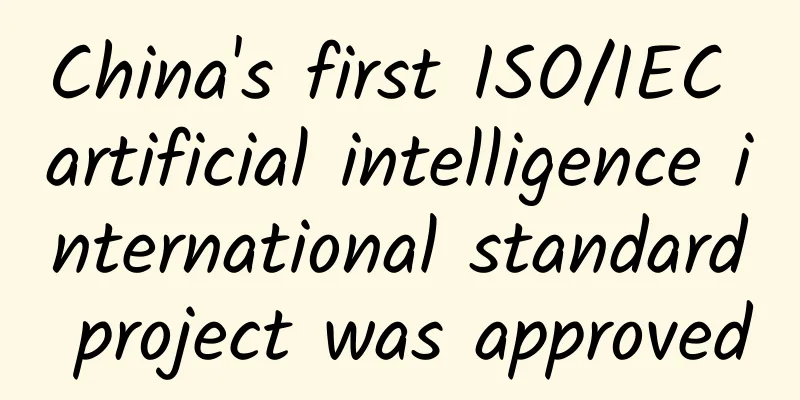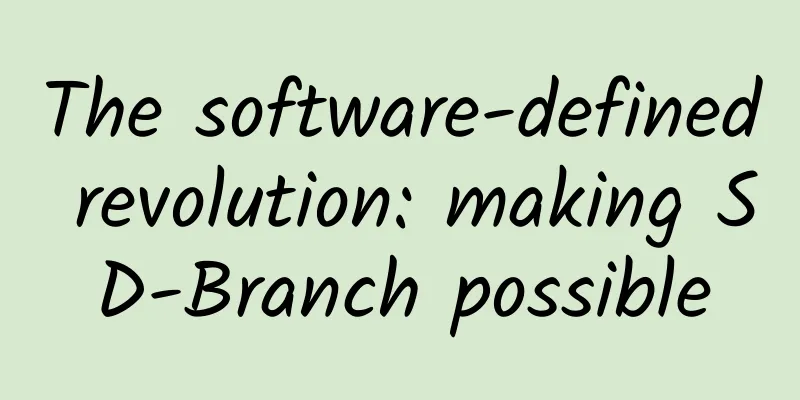6G, how should the communications industry tell an attractive story?

|
6G has come suddenly like a spring breeze. Recently, the second "Global 6G Technology Conference" was held. Compared with the low-key first conference, many heavyweight experts spoke at this conference, and the technology and direction of 6G were also explained in more detail. 6G is no longer a vague concept, but a prospect to be pursued. Of course, we cannot say that the 6G era is about to begin. The communications industry widely expects that 6G will not be officially commercialized until around 2030. The reason why 6G is being discussed so enthusiastically in the 5G era is an old tradition in the communications industry: the discussion of 5G in the 4G era and the discussion of 4G in the 3G era are all the same, which can be called "one generation for commercialization and one generation for R&D." It is believed that, starting from now, the popularity of 6G will continue for many years and will not stop until it is put into commercial use. Therefore, the communications industry needs to tell two stories well: first, to the industry, believing that 6G technology has a bright future; then to the majority of users, believing in the huge creativity of 6G technology in life, work, and economy. The slogan "4G changes life, 5G changes society" has been deeply rooted in people's hearts, so what can 6G change? How do 3G/4G/5G tell stories?In order to let 6G tell an attractive story, we first need to review how 3G/4G/5G tell stories. To be honest, the main storyline is nothing new. The media usually uses downloading to describe it vividly: 3G network speed can download a piece of music in one minute, 4G network speed can download a movie in a few minutes, and 5G network can download a movie in a few seconds... These stories have not been fully realized, partly because the media has misunderstandings about communication technology, often applying the theoretical speed of technology to reality, and the communication industry has chosen to consciously or unconsciously agree with the exaggerated results. However, the user's perceived network speed is affected by multiple factors such as network deployment density, user scale, terminal equipment, etc., and there is a large gap between it and the theoretical network. But no matter what, 3G and 4G have undoubtedly profoundly changed people's lives and triggered the prosperity of the mobile Internet industry. The 3G technology was once known as "capable of making video calls", and it has become a national-level video application in the 4G era, such as WeChat video calls, Douyin, and Kuaishou. Users are also willing to pay higher rates for faster network speeds. But this main line has become a bit forced in the 5G era. 5G network speed is 10 times faster than 4G, but users are not clear about what it can be used for. In short, 5G lacks "killer applications" on the consumer side. The communications industry no longer regards speed as the only selling point of 5G, but also emphasizes its low latency, high reliability, large connection capabilities, etc., and then vigorously explores the application prospects of 5G in vertical industries. On the consumer side, 5G still has more than 10 years of vitality, and new story lines are still being nurtured. Only when the story of 5G can be told smoothly - on the consumer side and the industry side, will 6G have a story to tell. Will the Metaverse be the new main plot?At this 6G Technology Conference, Wu Hequan, a heavyweight expert in the communications industry and an academician of the Chinese Academy of Engineering, was the first to question the logic of 6G's bandwidth increase. Wu Hequan pointed out that from 2G to 5G, each generation of mobile communications has aimed at bandwidth expansion. The peak rate of 5G has reached the 1Gbps level of optical fiber, but the content development and terminal computing power are lagging behind. Is it still necessary for 6G to aim at a large-scale rate increase? Downloading is no longer the bottleneck of the Internet. The memory of the previous generation of users about the slow Internet speed is rapidly fading. The new generation of users is more concerned about what else they can do with the Internet speed of hundreds of megabits and thousands of megabits, besides watching videos (including uploading videos on the industry side). So, as a journalist, the first thing that comes to my mind is the popular "Metaverse". After all, Zuckerberg betting a trillion-dollar company on the project was a huge shock. Although in the short term, the full entry into the Metaverse has brought huge financial losses to Meta (the Chinese name is Metaverse, Facebook changed its name) and a sharp drop in stock prices, the virtual world represented by the Metaverse, which maps and interacts with the real world, has opened up the imagination of the industry after the enlightenment of VR/AR. The underlying infrastructure of the Metaverse has at least two core elements: network and computing power. 5G and the Metaverse have been discussed together to some extent. Regarding the relationship between 6G and the Metaverse, Wu Hequan commented that the Metaverse needs 6G. The peak throughput of real-time interaction of holographic display may reach 150Gbps/s. Even if it is compressed 100 times, the average throughput must reach 1.5Gbps/s. Multi-channel concurrency may reach the Tbps level, which 5G will find difficult to support. However, the Metaverse is a consumer-oriented application that may be expanded to the industry, and is not a rigid demand for 6G. For the main storyline, the topic brought by 6G's support capability is enough. After all, continuing to talk about downloading movies is too old-fashioned, and discussing the Internet of Everything, the integration of space, land and sky, etc. is far away and lacks realism for users. Relatively speaking, the concept of the metaverse is very sexy. If it becomes the synonym of the new generation of mobile Internet in the future, 6G will be more attractive to users. Of course, this is still in its early stages. According to the development law of the mobile communications industry, 6G will really whet consumers' appetites until around 2027. By then, the logic of 5G's story will have been told. For example, the full coverage high-speed network based on 5G has achieved highly automated driving and completely changed the transportation industry. Then there will be more stories to tell about 6G. 5G success comes first, then 6G futureThe mobile communications industry has been passed down from generation to generation. 6G is by no means a castle in the air, but is built on the strong infrastructure and commercial success of 5G. There will be no exception. Just like the current progress of 5G, it also relies heavily on the successful 4G network. Even in vertical industries, 4G has also made great contributions to opening up new territories. For example, Harish Viswanathan, a senior expert at Bell Labs, said in an interview with C114 that 5G should smoothly transition to 6G and then gradually move to the latest technology. Xiang Jiying, chief scientist of ZTE, also pointed out that similar to the early stage of 5G research, many 6G technologies have been proposed in the industry, but only a small number of technologies will be adopted in the end, and most of them are enhancements rather than revolutionary technologies. 6G will develop on the shoulders of 5G. Data map: Japan forms Beyond 5G Promotion Alliance to compete for the right to speak on 6G Therefore, the communication industry should focus on promoting the commercial success of 5G. This is a huge challenge. A technical expert from China Telecom bluntly stated that there is a "serious oversupply" of technology in the current network system. The communication industry's understanding and vision of the future are out of touch, including 5G, which is also based on its own standpoint to view industry applications, resulting in a mismatch. The attraction of 6G to operators is to "do subtraction", simplify functions, and do a good job of communication itself. After more than two years of commercial use, 5G has not yet captured the "minds" of users, whether on the consumer or industrial side. This is not surprising, because in the 2G/3G/4G era, my country was a follower, with mature experience to learn from, and surpassed in the 4G era with a robust industrial chain and massive user resources. For the first time in the 5G era, China is in a leading position in the world, and in turn, it is exploring the way for the world, solving various "difficult and complicated problems", and promoting 5G to commercial success. The world has also taken action and expressed unanimous recognition of the value of 5G. When the potential of 5G is fully tapped, and there are still problems that cannot be solved, it is time for 6G to appear. |
<<: Ruijie Networks releases "U Space" solution, a new choice for remote office
>>: Buildings are finding ways to incorporate 5G into IoT networks
Recommend
With 5G commercial licenses issued ahead of schedule, how should we respond to the challenges that follow?
On the eve of the Dragon Boat Festival, the Minis...
DogYun Korean Classic Cloud is now available at 30% off, starting from 17.5 yuan per month or 175 yuan per year
I received a message from DogYun that the Korean ...
DMIT: Los Angeles 1-10Gbps high bandwidth CN2 GIA line VPS quarterly payment starts from $28.8
DMIT.io is a foreign hosting company founded in 2...
"You may need to change your SIM card to use 5G" is a hot topic due to concerns about user experience
One person’s opinion Users hope that operators ca...
10gbiz: Hong Kong CN2 GIA+China Unicom VIP line launched, VPS 60% off monthly payment starting from US$2.75
10gbiz has launched a new VPS host in the Hong Ko...
Do you really understand API Gateway? This article explains the differences and integration between microservice gateway and enterprise application gateway
Software architecture is always evolving and iter...
How fiber optics helps businesses and people in the digital age
How fiber optics helps businesses and people in t...
RoboVPS: Germany/Netherlands unlimited traffic VPS starting from 129 rubles (≈10.9 yuan) per month
RoboVPS is a foreign hosting company founded in 2...
Megalayer: Hybrid cloud servers/high-defense servers up to 60% off, Hong Kong dedicated servers from 399 yuan/month, VPS up to 50% off
Megalayer released a promotional plan for March, ...
NFV/SDN is a must for 5G, not an option
The arrival of 5G is not only an evolution of net...
China has the sole power over 5G worldwide? The United States has taken action against Huawei again
*** News: At 10 p.m. on April 25, the Wall Street...
What is coming will come. Taiwan may shut down 3G this year.
According to Taiwanese media reports, Chunghwa Te...
Huawei's Hou Jinlong: Grow together with global developers and win together in the new era of computing
On March 27, at the Huawei Developer Conference 2...
How the global 5G network will reshape future defense strategies
Explore the impact of global 5G networks on futur...
Ten pictures and five questions to help you thoroughly understand Kafka architecture tuning
1 Do you know how Kafka's ultra-high concurre...







![[Black Friday] Zgovps: $12.9/year-1GB/20GB/2TB/Japan IIJ/Germany/Los Angeles AS4837, etc.](/upload/images/67cabcf94e758.webp)
![[Footprints] In addition to creating a highly available application environment, what else does FreeWheel's operation and maintenance do?](/upload/images/67eba9ff77260.webp)
